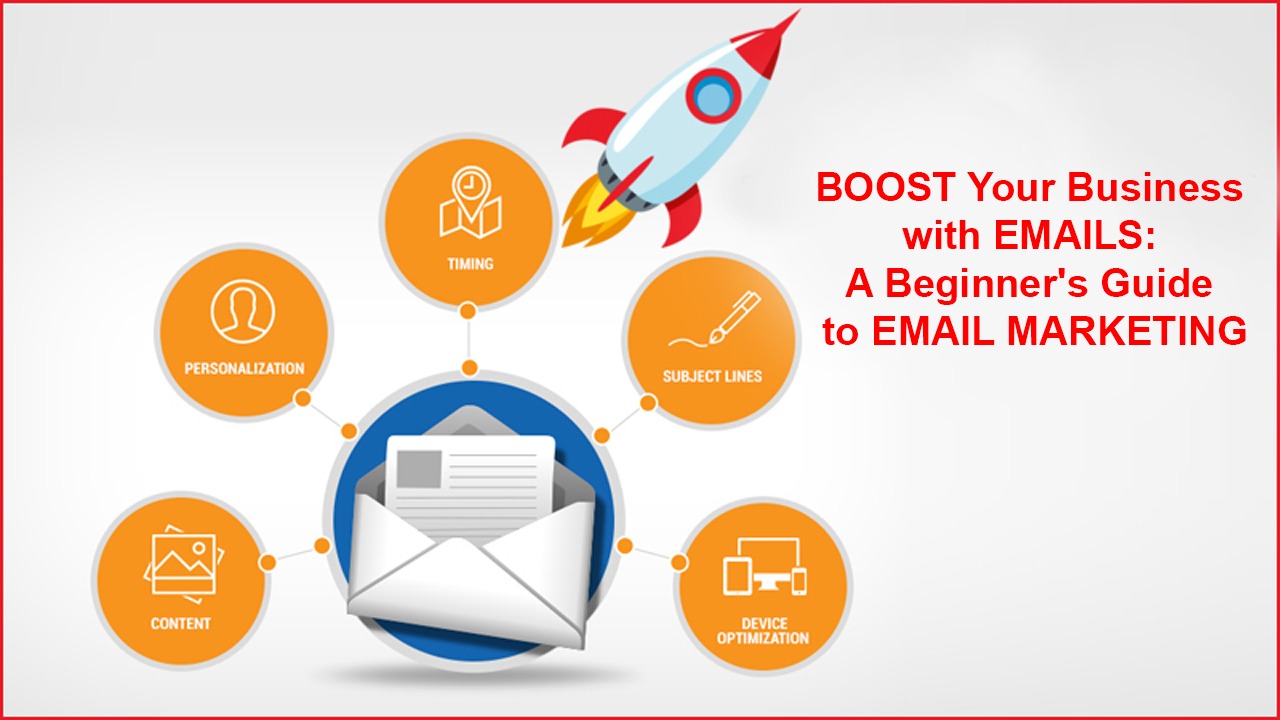Boost Your Business with Emails: A Beginner's Guide to Email Marketing
Email marketing is a powerful tool for businesses to connect with their audience. It involves sending emails to a group of people with the aim of promoting products, sharing valuable content, or building relationships. Through catchy subject lines, engaging content, and strategic calls-to-action, businesses can nurture leads, drive sales, and foster customer loyalty. Email marketing is a cost-effective and direct way to communicate with your audience, making it an essential component of digital marketing strategies.
Creating Click-Worthy Calls-to-Action for Impactful Results -

CTA stands for "Call-to-Action" in emails. It's essentially a prompt or instruction that encourages the recipient to take a specific action. In email marketing, a CTA is typically a clickable button, link, or phrase that guides the reader to do something, like making a purchase, signing up for a newsletter, or visiting a website. Effective CTAs are clear, compelling, and create a sense of urgency or value to encourage engagement.
How to work CTA?
A Call-to-Action (CTA) works by prompting the email recipient to take a specific action. Here's a breakdown of how it typically works:
.jpeg)
1. Clarity:
The CTA is clear and straightforward. It tells the recipient exactly what action to take, such as "Shop Now," "Sign Up," or "Learn More."
2. Placement:
The CTA is strategically placed in the email, often near the end or in a prominent position where it's easily noticed. This ensures that the recipient sees it without having to scroll too much.
3. Design:
A well-designed CTA is visually appealing. It may be a button with a contrasting color, making it stand out, or a hyperlink with clear and concise text.
4. Persuasive Language:
The language used in the CTA is persuasive. It may create a sense of urgency (e.g., "Limited Time Offer"), highlight benefits (e.g., "Get Your Free Trial"), or appeal to the reader's emotions.
5. Relevance:
The CTA is relevant to the content of the email. It should align with the overall message and purpose of the email, providing a logical next step for the recipient.
6. Mobile-Friendly:
Given the prevalence of mobile devices, a good CTA is designed to be easily clickable and visible on various screen sizes.
7. Tracking:
In email marketing, the performance of CTAs is often tracked. Marketers analyze metrics like click-through rates to understand how well the CTA is engaging the audience.
Remember, the effectiveness of a CTA can vary based on the audience, industry, and context, so testing different approaches through A/B testing is a common practice in optimizing email campaigns.
Benefits -
1. Increased Engagement:
CTAs prompt users to take specific actions, boosting interaction and engagement with your content or offerings.
2. Conversion Opportunities:
Well-designed CTAs guide users toward desired actions, such as making a purchase, signing up, or downloading content, increasing conversion rates.
3. Clear Direction:

CTAs provide a clear and direct path for users, minimizing confusion and making it easier for them to navigate through your website or email.
4. Building Momentum:
CTAs help in maintaining a flow within your content, keeping users invested and moving through your website or marketing funnel.
5. Measurable Results:
CTAs make it easier to track the success of your campaigns. By monitoring clicks or conversions, you can assess the effectiveness of your calls to action.
6. Enhanced User Journey:
CTAs contribute to a seamless user journey by guiding individuals from one stage of the funnel to the next, facilitating a smoother overall experience.
7. Promotion of Key Messages:
Use CTAs strategically to highlight and promote important messages or offers, ensuring they don’t get overlooked by your audience.
Remember, the effectiveness of a CTA often depends on its relevance to the content, clarity, and the value it offers to the user.
In conclusion, a well-crafted Call to Action (CTA) is a powerful tool that goes beyond just prompting user interaction. It serves as a navigational guide, enhancing user experience, increasing conversions, and contributing to the overall success of your marketing efforts. By providing clarity, encouraging engagement, and facilitating a smooth user journey, CTAs play a pivotal role in turning potential interest into meaningful actions, ultimately driving the desired outcomes for your business or campaign. Regular assessment and optimization of CTAs based on user behavior contribute to sustained effectiveness and continued improvement in achieving your goals.



Comments